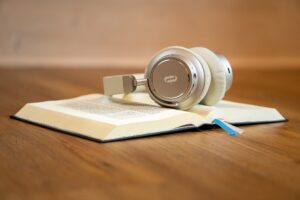The older you get, the more important it becomes to have certain freedoms. At some point, you don’t want to be chauffeured around by mom or dad all the time. As a teenager, you have a number of options to make yourself mobile. From bicycles to mopeds to car licenses, today we’ll explain everything you need to know before you get started.
Table of contents
The Bicycle In Traffic
In the 4th grade of elementary school, you can take the “bicycle driving license”. This is not mandatory for children in Germany to be allowed to ride on the roads. However, it does teach them how to deal with difficult situations in traffic. That’s why it’s a good idea for most kids to take the voluntary bicycle license if they have the opportunity. Since there are hardly any costs involved, this is not a disadvantage for kids and parents. Children in Austria are only allowed to ride a bicycle on the road (without an accompanying person) between the ages of 10 and 12 if they have passed the cycling test. From the age of 12, Austrian children are allowed to ride alone in road traffic without a bicycle license.
To pass the bicycle license, you should attend traffic education classes and register for the test. You will need a passport photo and the completed application for the bicycle license even after the bicycle test, the following applies: Always follow the traffic regulations and never ride without a helmet! There are country-specific regulations concerning the compulsory wearing of helmets by children. Find out about this by asking the class teacher or your parents. As soon as you are riding your bike regularly, you should take it to a service from time to time. There, the bike will be checked for brakes, chain and general condition. Defects will be repaired so that you can ride your bike as safely as possible.
To avoid causing an accident or getting into trouble with the police, you should also know about the mandatory equipment of your bike in your country. In Austria, for example, the following applies:
In poor visibility and at night, you must ride with lights and taillights. In addition, cyclists are subject to a blood alcohol limit of 0.8 per mille. If you exceed this limit, you will be subject to hefty fines if your blood alcohol level exceeds 0.8 per mille. Depending on how high your blood alcohol level is, a fine of 800 to 5900 € can be due. If you refuse the breathalyzer test, it will cost you between 1600 and 5900 € in Austria. Of course, you are also not allowed to ride a bike under the influence of drugs. There are also high penalties for this.
Also, make sure to avoid the following violations:
- Riding in the wrong direction on a bike lane or one-way street.
- Riding without lights at night and in poor visibility conditions.
- Riding side by side with several other riders.
- Cycling on the sidewalk (for kids over 12).
- Obstructing pedestrians at the crosswalk.
- Pushing your way between stationary vehicles despite lack of space.
To best protect yourself, you can put reflectors on your jacket and bike spokes. This way you will be seen by motorists even in the dark.
Mopeds And Motorcycles (AM, A1)
In Germany and Austria there is the moped license AM. While German kids are only allowed to ride a moped from the age of 16, Austrians are allowed to do so from the age of 15. However, you need the consent of a parent or guardian. If you already have the car license (B), then you don’t need a moped license to ride the moped. The moped must not go more than 45 km/h. Better said: It must not be possible to drive faster with the moped (construction-related maximum speed). Be careful with modifications on the moped! Most modifications are forbidden without exception and can lead to hefty fines if discovered during traffic controls. This applies to scooters as well as mopeds.
In order to get your moped license, you have to complete a relatively short training course at the driving school of your choice. This costs between 150 and 289 euros. In the theory course you will learn for a few lessons how to behave properly with a motor vehicle in traffic. The practical course also includes a few units, some of which are completed in traffic and some on the practice range. Afterwards, there is a test of your theoretical knowledge. Once you have passed this, you will receive your moped license, provided you have reached the minimum age. Of course you have to be able to drive the moped sufficiently to get the license. But this is usually not a problem.
Attention Mopeds are not without danger. In contrast to a car driver, you are quite unprotected on the road as a moped driver. Therefore, you must be especially careful to be visible to other road users from a distance. Don’t dress too darkly and buy a light-colored moped helmet. In the event of an accident, there is something like an airbag (handlebar padding) for mopeds. Highly visible turn signals (LED) and strong headlights reduce the risk of an accident. Intact mirrors give you a good overview. Do not ride at night if any part of your lights are out! This is very dangerous, because you are almost invisible to other road users and it can easily lead to a serious, if not fatal, accident.
Car Driving License (B)
If you are old enough, you will get your car license as soon as possible. Unfortunately, compared to the moped license, this one is quite expensive and involves much more effort. Who wants to make the B driving license, must sometimes several thousand euros berappen. A comparison between the driving schools is particularly worthwhile. Be sure to ask which learning materials are included in the price and how many driving lessons are included in the package. Depending on the offer, the total price will be between 1200 and 2000 €. If you are a very unsure driver, then it will tend to be a bit more expensive for you, because you will need more driving lessons until you are confident enough for the practical test.
The first phase of training usually starts with the theory part. In a group, you will go through the theoretical basics and rules for drivers together with a driving instructor. Because the theory part is very extensive, many kids take the option of a vacation course. Next, you will have some practice sessions with your driving instructor. It’s also possible to have practice drives with a parent or another experienced driver. This can even save you some driving lessons at the driving school and therefore cash, depending on the type of offer. If you have already completed a comprehensive first aid course, this is usually sufficient. Otherwise you will have to catch up on it in order to be able to take the exams.
The theoretical exam is quite extensive. In the meantime, there is special software with which you can work through the individual questions using a card index system. Alternatively, you can study with a book. Once you have passed the theoretical exam, you can register for the practical exam. At this exam you will have to answer some vehicle specific questions and prove your practical skills. You will have to park, drive a slalom and drive a given route. The more confident you appear and the fewer mistakes you make, the more likely you are to pass. Be sure to look in your mirrors when turning and before intersections, just as you learned. Once you have cleared this hurdle, you can start driving yourself. After a while you will have to complete a perfection drive. This is basically a normal driving lesson in which the driving instructor observes you and then gives you a few tips.
Then there’s driving safety training, where you experience what it’s like to skid, among other things. In a controlled setting and accompanied by the driving instructor, you will be exposed to dangerous situations in order to learn the correct reaction. This can save lives in an emergency! The driving safety training usually lasts one day. Some time later it comes to the last part of the training: the 2nd perfection drive. After that you have finally made it. Of course, even after you have completed the training, you still have to abide by the rules and laws you have learned.
Worksheet For The Text
1) Why does it make sense to take the voluntary bicycle driver’s license?
2) What should you keep in mind for your own safety when riding a moped?
3) Car driving license: What is the training like? Describe the different phases.
Photo: 3DClipArtsDe / bigstockphoto.com












